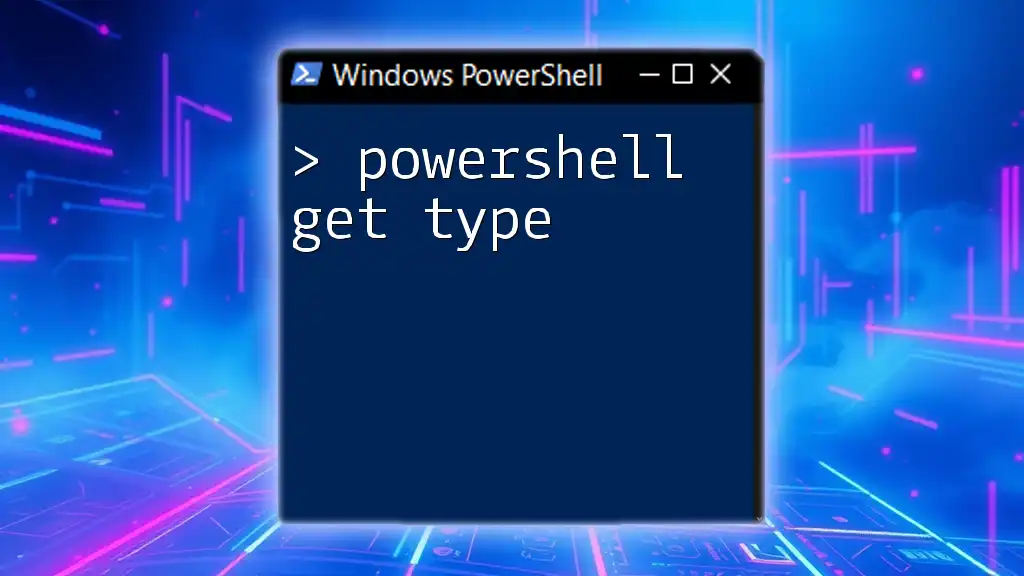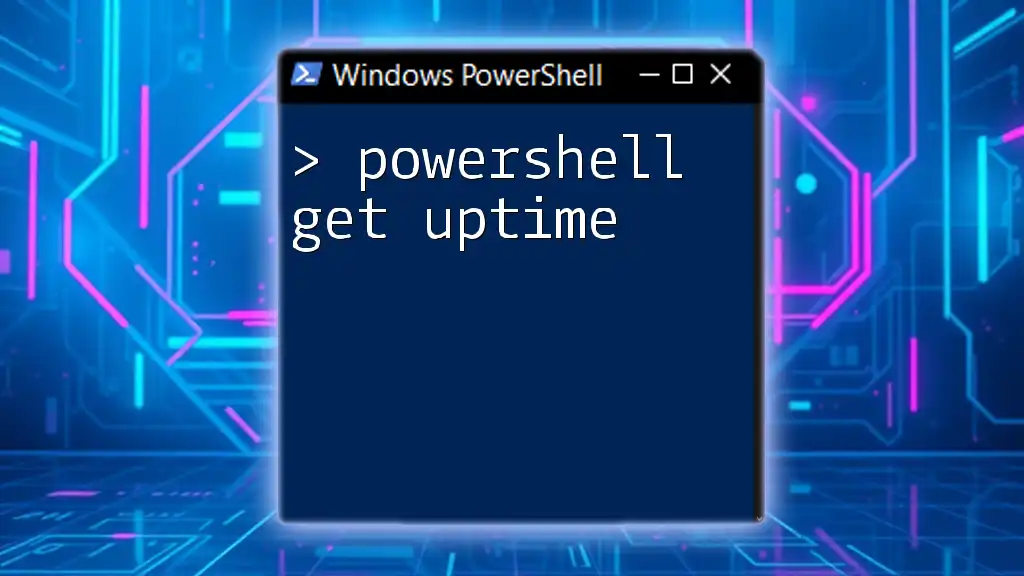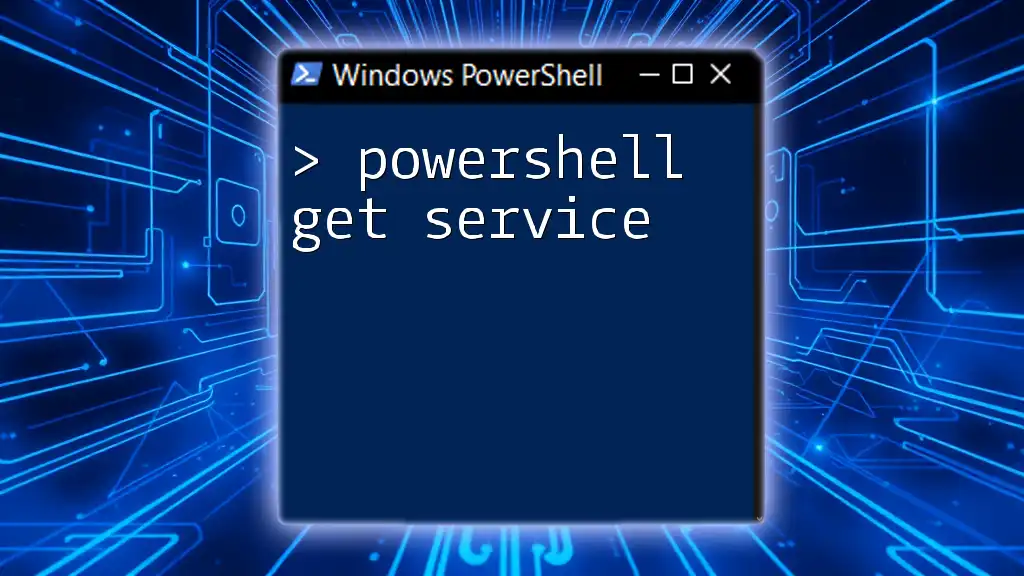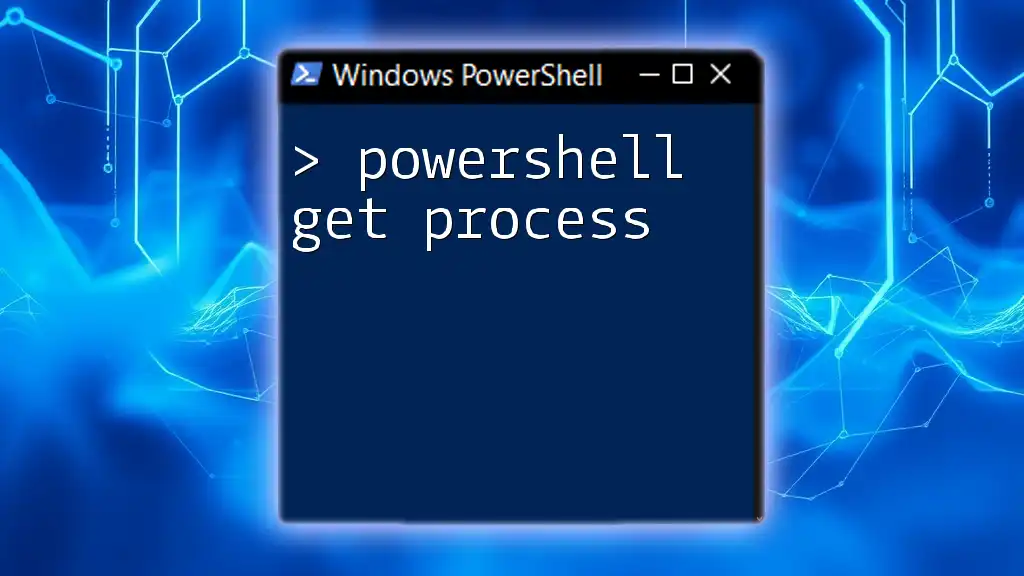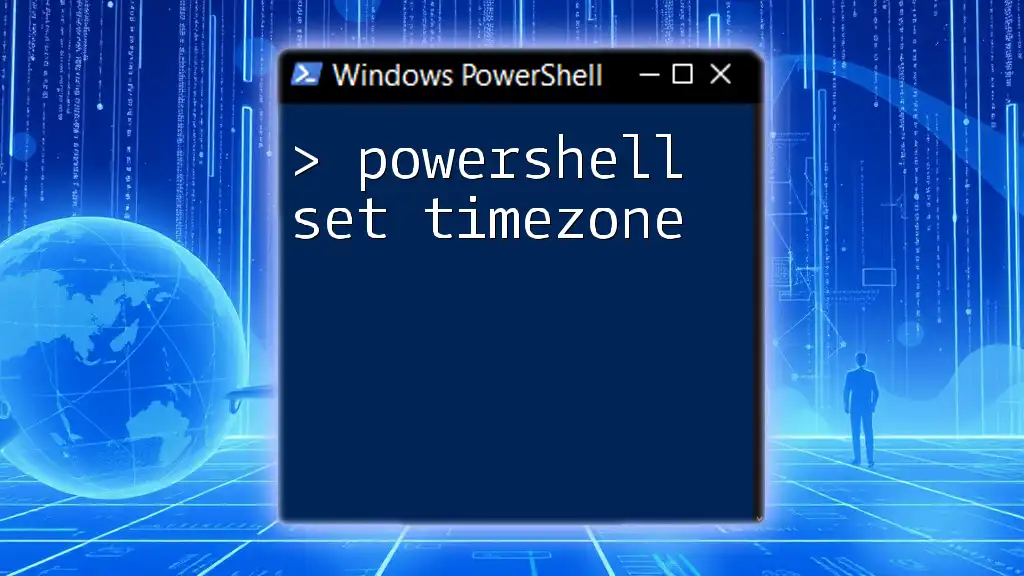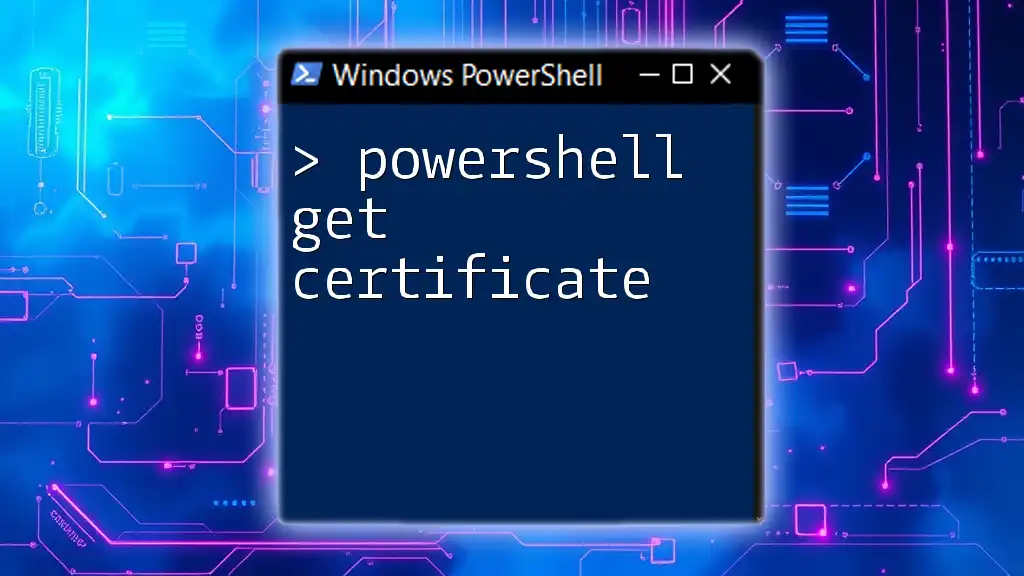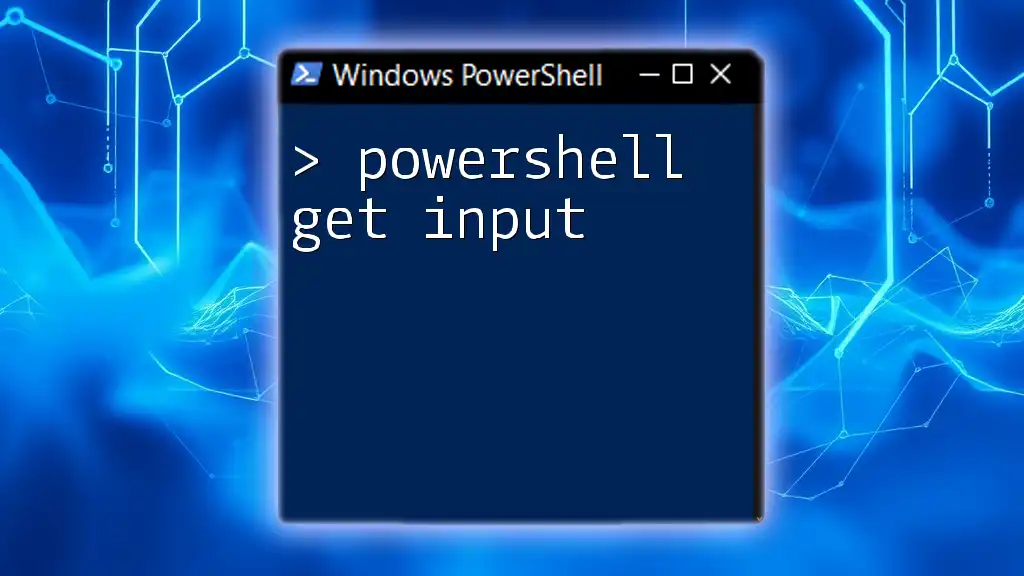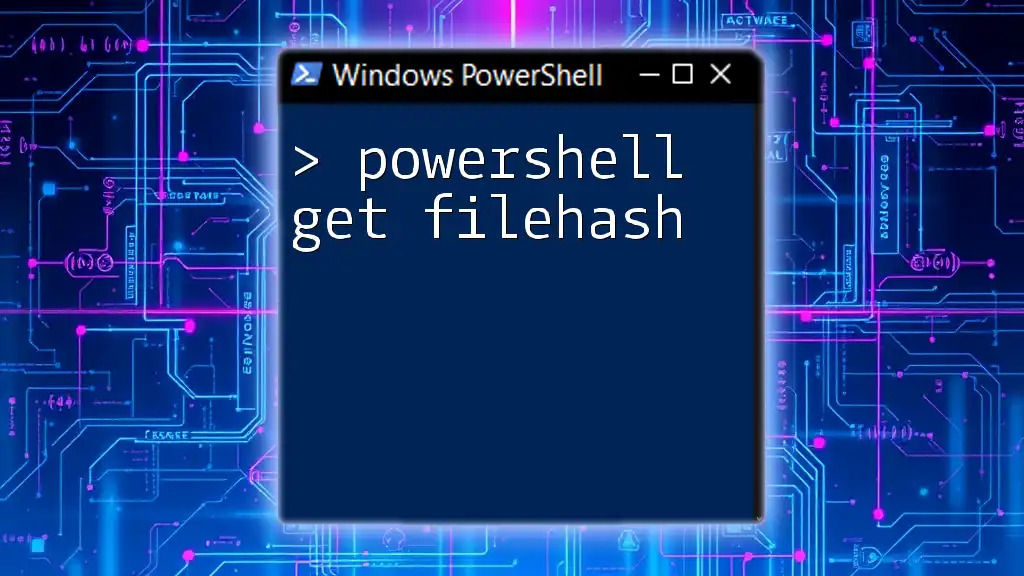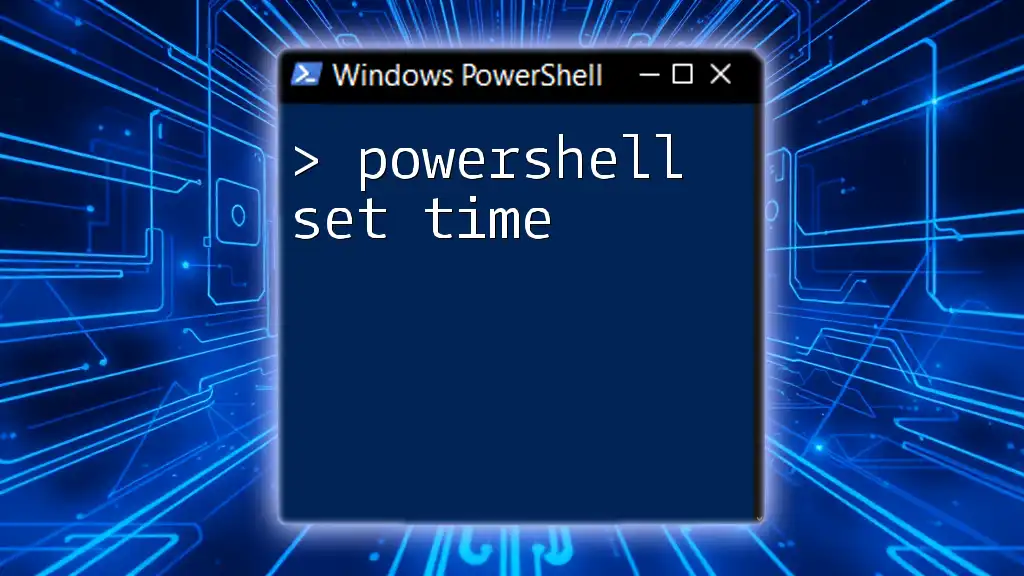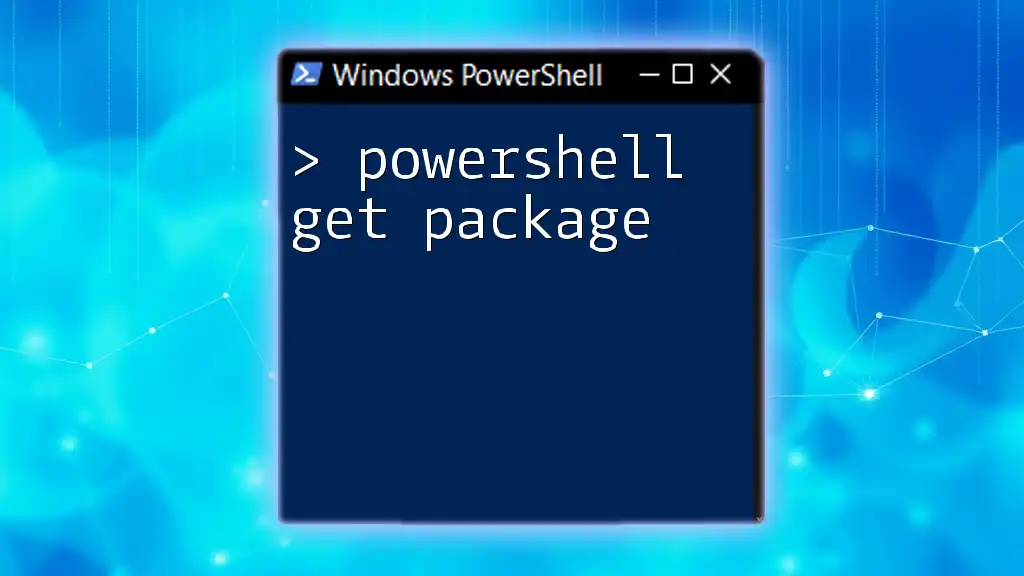The `Get-Type` cmdlet in PowerShell retrieves the type information for a specified object, allowing users to easily understand the properties and methods available to that object. Here’s a code snippet demonstrating its use:
# Example of using Get-Type to get type information of a string
'Hello, World!' | Get-Type
Understanding PowerShell's Get-Type Command
What is Get-Type?
The `Get-Type` cmdlet in PowerShell is a powerful utility that helps users identify the data type of a given variable or object. Understanding the types of data you are working with is essential in PowerShell, as it impacts how you can manipulate data and interact with different cmdlets.
Why Use Get-Type in PowerShell?
Identifying data types is critical for several reasons. It aids in debugging scripts, writing conditional statements, and enhancing performance. Using `Get-Type` allows users to quickly ascertain how variables will behave when passed through various commands, leading to fewer errors and increased efficiency in script execution.
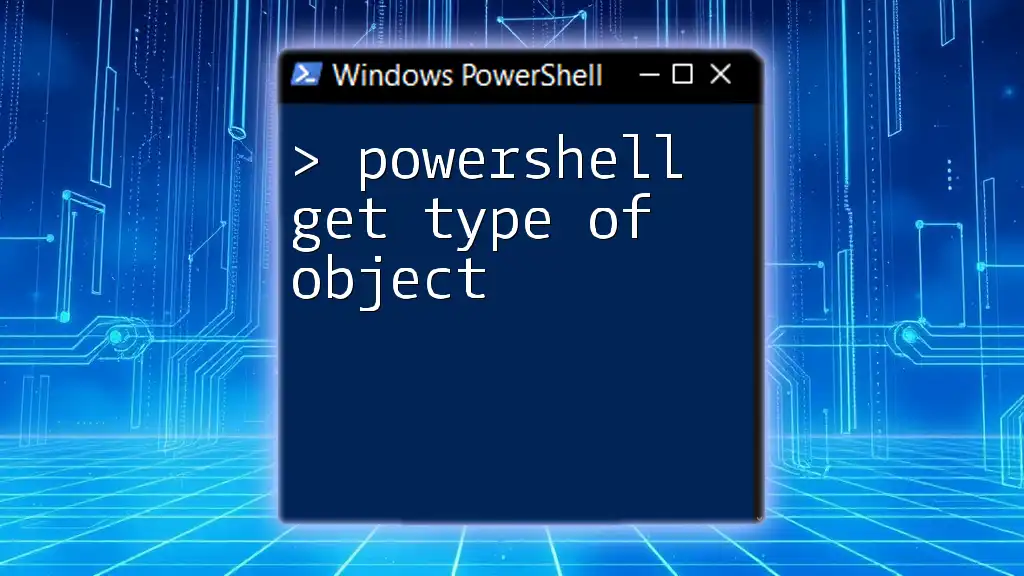
Getting Started with PowerShell Get-Type
How to Access PowerShell
Before diving into the `Get-Type` command, you need to access PowerShell. Depending on your operating system, you can launch PowerShell as follows:
- Windows: Click on the Start menu, search for "Windows PowerShell," and launch it.
- Mac: Use the Terminal app and type `pwsh` if you have PowerShell Core installed.
- Linux: Open your terminal and type `pwsh` to access PowerShell Core.
Basic Use of Get-Type
The Syntax of Get-Type
The syntax for using `Get-Type` is straightforward. You typically provide it with a variable or object whose type you wish to identify. The basic command looks like this:
Get-Type <variable>
For example, if you want to find out the type of a string variable, you can do so easily. Here’s a simple code snippet:
$myVariable = "Hello, World!"
Get-Type $myVariable
Displaying Data Types
The output of the above command will display `System.String`, indicating that `myVariable` is of type string. This method proves essential in identifying the types of more complex objects as well.
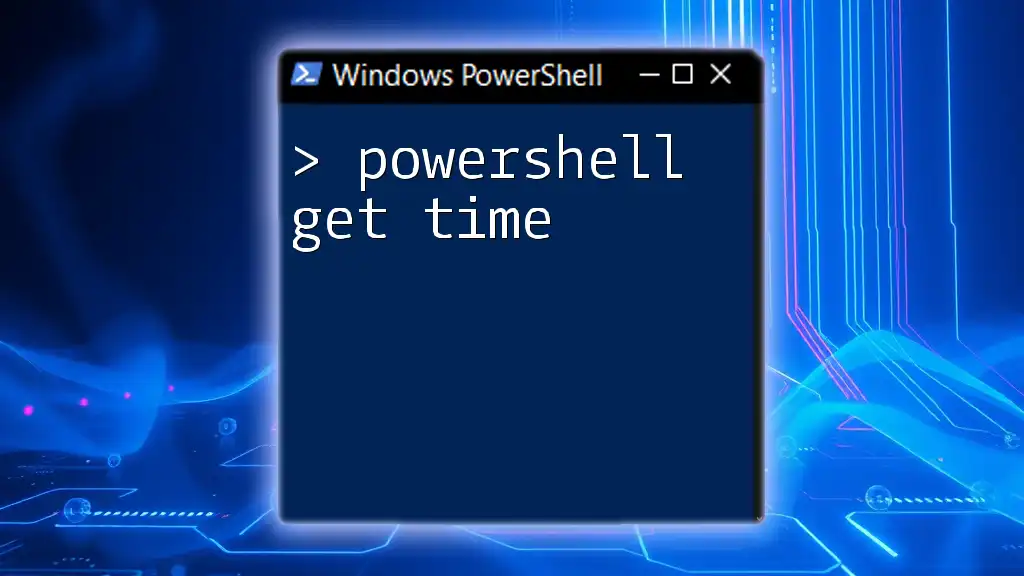
Exploring Object Types in PowerShell
Using Get-Type to Identify Object Types
The `Get-Type` cmdlet is not just limited to primitive data types like strings or numbers; it can be used to identify more complex objects as well. For instance, if you create an array, you may want to examine its type:
$myArray = @(1, 2, 3)
Get-Type $myArray
When you run this code, it will return `System.Object[]`, indicating that `myArray` is an array of objects. Understanding this helps tailor your script logic according to the type of data structure you're working with.
Advanced Get-Type Usage
Using Get-Type with Custom Objects
PowerShell allows for the creation of custom objects, which can also be inspected using `Get-Type`. For example, if you create a custom object to store user details:
$myObject = New-Object PSObject -Property @{ Name="John"; Age=30 }
Get-Type $myObject
The returned output will display `PSObject`, allowing you to understand how this custom object fits into your script's logic.
Combining Get-Type with Other Cmdlets
`Get-Type` can be effectively combined with other cmdlets to streamline processes. For example, if you read file contents and want to determine the data type of its contents, you could use:
$fileContent = Get-Content "C:\path\to\your\file.txt"
Get-Type $fileContent
This sequence demonstrates how `Get-Type` can integrate smoothly into your scripts, offering insights into data types dynamically.
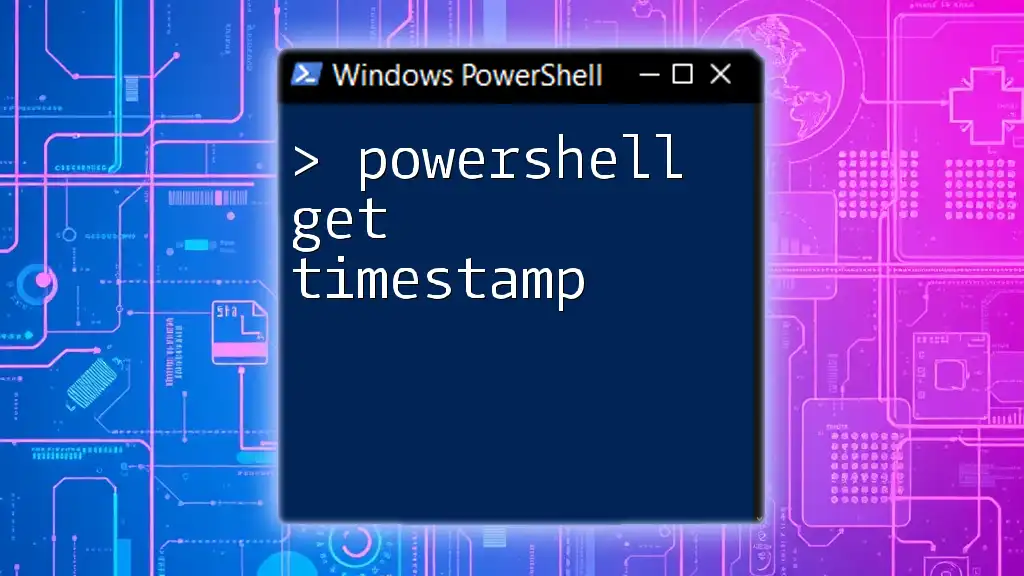
PowerShell Get-Type vs. TypeOf
What is the Difference?
While both `Get-Type` and the `TypeOf` operator serve to identify data types, they do so in different contexts. `Get-Type` is a cmdlet and is more versatile in its use, while `TypeOf` is an operator that can work inline within conditional statements or checks.
For example:
if ($myVariable -is [string]) {
Write-Host "It's a string!"
}
Deciding when to use `Get-Type` versus `TypeOf` generally depends on your specific use case and coding style.
Use Cases of Get-Type
Common Scenarios for Utilizing Get-Type
`Get-Type` can be exceptionally beneficial in numerous situations. Here are a few common use cases:
- Debugging Scripts: By verifying the data types of variables, you can identify discrepancies that may lead to errors.
- Writing Conditional Logic: When you need to handle different types distinctly, knowing your data type will guide your logic.
Real-Life Examples
Consider a requirement where you need to automate reporting. You might want to check the type of a variable prior to performing actions based on it:
if ((Get-Type $myVariable) -eq "String") {
Write-Host "It's a string!"
}
Using `Get-Type` allows for intelligent branching in your scripts, creating adaptable and error-resistant code.
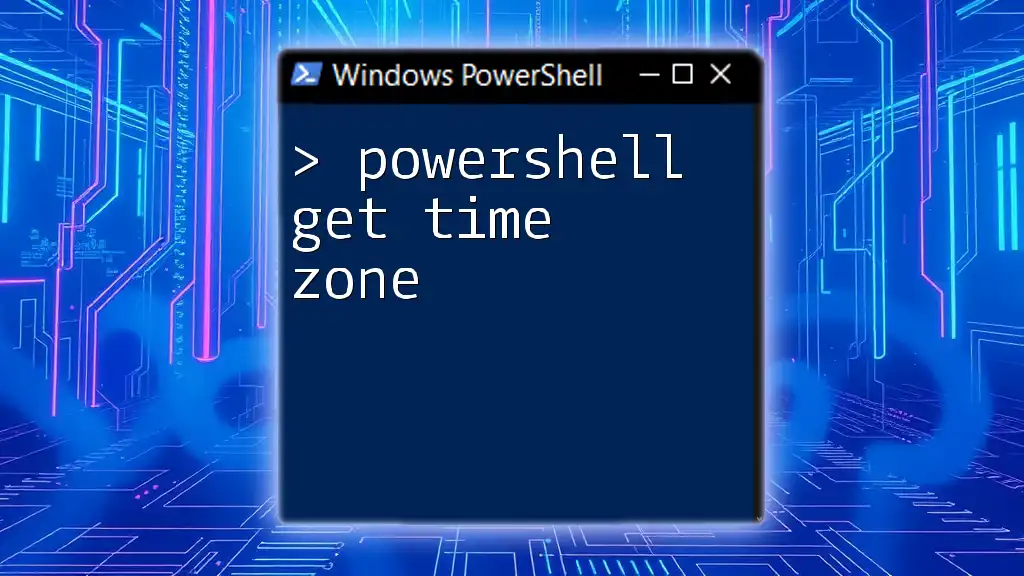
Best Practices for Using Get-Type in PowerShell
Efficiency Tips
To maximize your productivity with `Get-Type`, consider these efficiency tips:
- Avoiding Common Pitfalls: Watch out for mismatched data types that can cause unexpected results in your scripts.
- Enhancing Script Performance: Quick type-checking can lead to improved runtime, especially in larger scripts where data handling is critical.
Code Cleanliness
Keep your scripts readable by consistently using `Get-Type` appropriately. Clear documentation and consistent variable naming greatly contribute to maintainability.
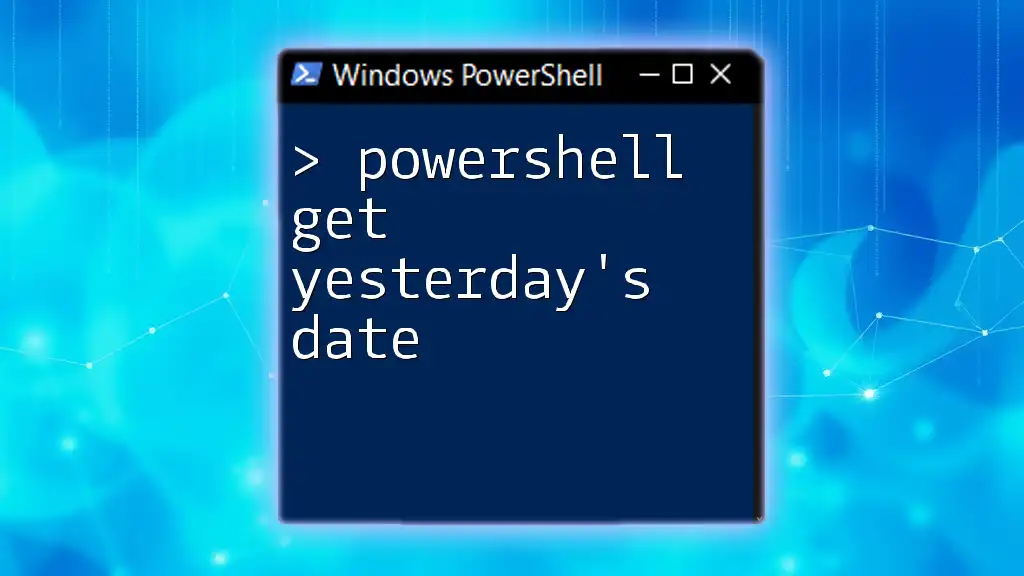
Conclusion
Through the PowerShell `Get-Type` cmdlet, users can effectively analyze and manage data types, significantly enhancing their scripting capabilities. By understanding and applying the principles of type identification, you lay the groundwork for more effective and skilled scriptwriting.

Additional Resources
Further Reading
For further insights and in-depth information, consider exploring the official Microsoft PowerShell documentation.
Practice Exercises
Engage in hands-on practice with suggested exercises to reinforce your learning and mastery of using `Get-Type` in various scenarios.

